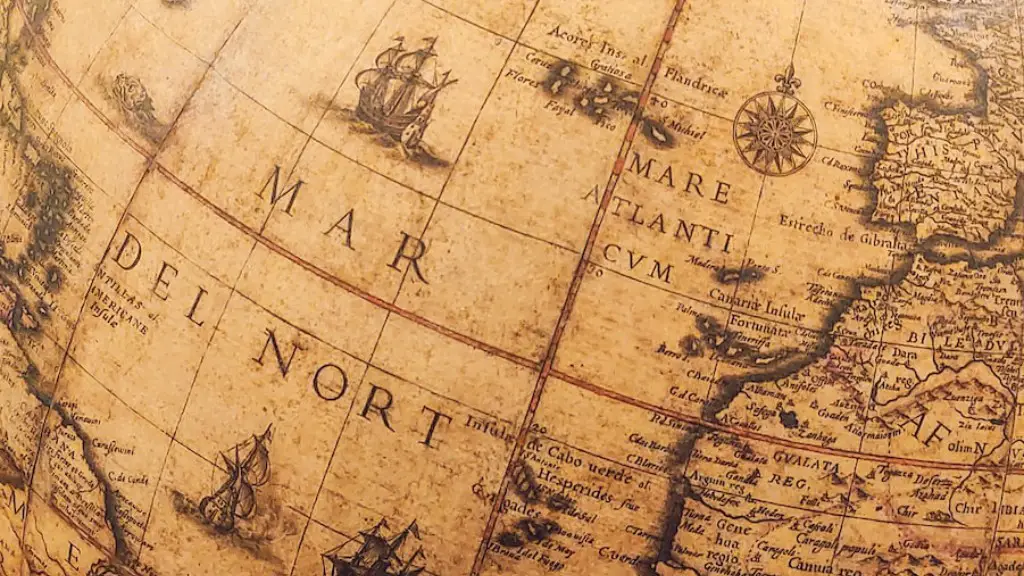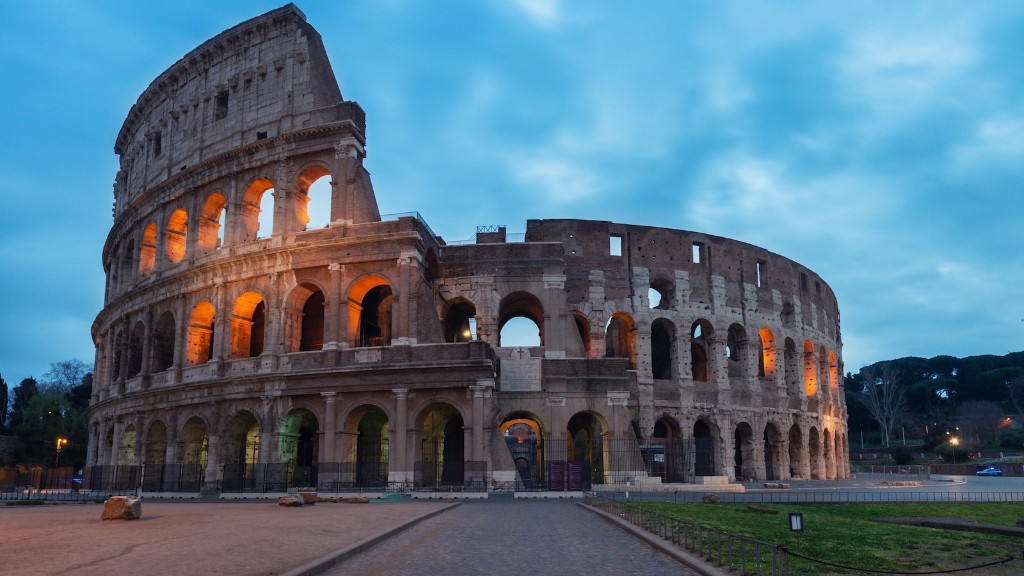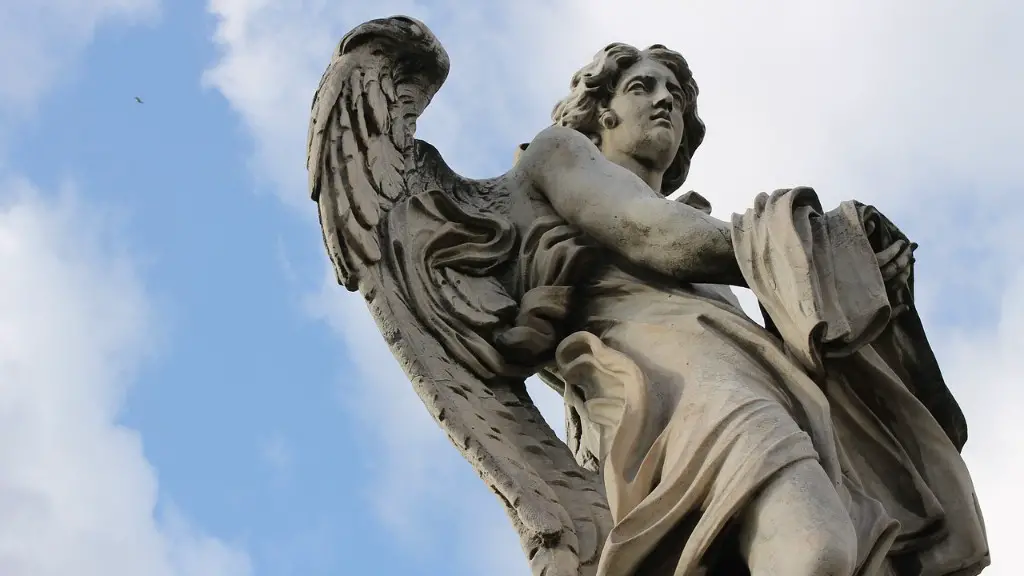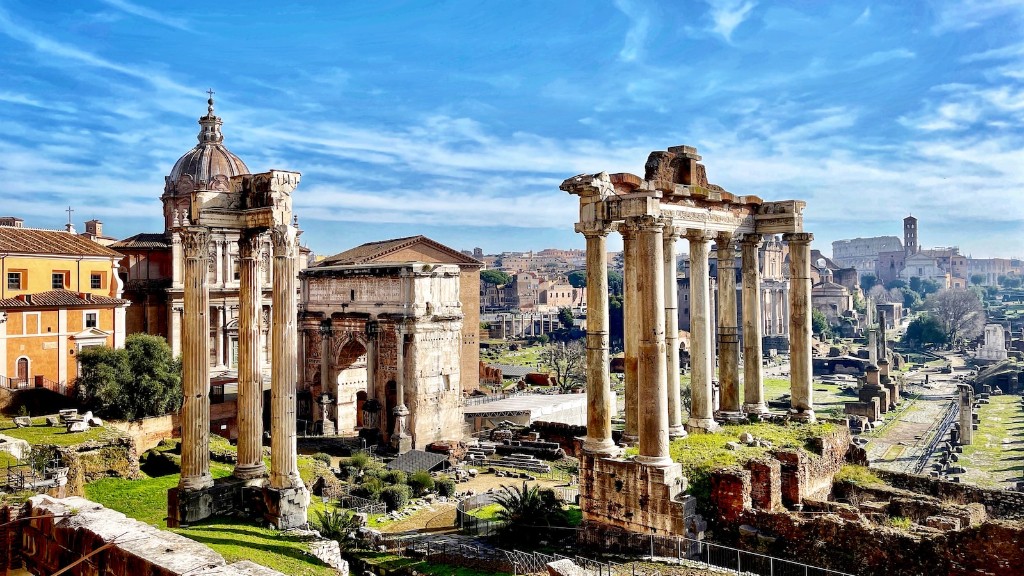Life in ancient Rome was a complex mix of glitz and glamour for the ruling elite and intense labor and deprivation for the enslaved lower classes. The Roman Empire was one of the largest empires of its time, ruling most of Europe, North Africa, and the Middle East. Life in Rome was very different from country to country within what is now known as the Roman Empire; however, there were some common aspects across much of the empire.
The city of Rome was the original heart of the empire and its citizens were accustomed to a luxurious lifestyle. Wealthy citizens lived in lavishly decorated homes, with marbled entryways and mosaic floors. Their gardens were lavish and their diets consisted of expensive foods, including eggs, fish, and foreign fruits. The elites dressed lavishly, with expensive fabrics and the finest jewels.
But for the majority of the population, life was far less pleasant. Rome was home to a large slave population who worked long hours in harsh conditions. Slaves were often treated as property, beaten, and sometimes even killed by their masters. Slaves were responsible for hard labor such as construction, farming, and mining.
The lifestyle of wealthy Romans also had its downside. Roman society was very hierarchical and the wealthy were under constant scrutiny by the lower classes. They were responsible for maintaining their homes, their gardens, and their status in the social hierarchy. This created an incredibly stressful and oppressive environment for the elites, who had to constantly work to maintain their position in society.
In addition to the stress and oppression of daily life, ancient Rome was plagued by disease and violence. Health care was inadequate and sanitation and hygiene standards were low. The streets of Rome were often filled with violence, with riots and political unrest being commonplace.
Political Structure
The political structure of ancient Rome was based on a complex system of government. Rome was ruled by an emperor, who was usually a member of the upper class. The emperor was supported by a senate composed of the elite. Although the senate had some power, the emperor ultimately had the final say over all laws and decisions.
The Roman Empire was divided into provinces, which were ruled by governors appointed by the emperor. The governors had the power to make laws and collect taxes. Each province was divided into smaller regions, which were ruled by local magistrates appointed by the governors.
In addition to the political structure, the Roman Empire was divided into social classes. At the top were the citizens of Rome, who held the most power and wealth. Below them were the freedmen, who had some rights but were still socially excluded. The lowest class were the slaves, who had no rights and were treated like property.
Religion
Religion was an important part of life in ancient Rome. The state religion was polytheistic, with the citizens worshiping gods such as Jupiter, Apollo, and Mars. The Roman pantheon also included deities imported from ancient Greece and Egypt. Local cults were also popular, with citizens worshipping various gods, goddesses, and spirits.
In addition to the official state religion, some Romans also followed foreign religions, such as Mithraism, which was a mystery cult of Persian origin. However, the Roman state was hostile to foreign religions and only allowed their practice in private homes or closed temples.
Religion was thought to bring protection and security to those who followed it. Thus, most citizens would make offerings to the gods and goddesses in the hope that they would have a good harvest, safe trips, and victory in battles. Religion was also seen as a way to appease the gods and seek revenge on one’s enemies.
Leisure Time
Leisure time in ancient Rome was enjoyed by the elite and lower classes alike. The wealthy citizens were able to take part in various forms of entertainment, such as theater, chariot racing, and gladiator fights. The lower classes also enjoyed leisure activities, including public baths and festivals. For example, the festival of Saturnalia was a popular festivity, during which slaves and masters exchanged gifts and feasted.
The public baths were popular leisure spots in Rome. Wealthy citizens enjoyed them as places to relax and socialize, while the lower classes used them as a source of pleasure and respite from their difficult lives. They also served a practical purpose, as the baths provided clean water for bathing, laundry, and cooking.
In addition to public baths and festivals, the lower classes also enjoyed gambling, festivals, and sports. Gambling was a popular pastime, with wrestling and chariot racing being the most popular sports. Athletics was also popular, with athletes competing in running and jumping events.
Education
Education in ancient Rome was reserved for the wealthy. Upper-class citizens were educated in Latin, rhetoric, literature, and philosophy. Boys typically attended schools run by private tutors or in special schools. Lower classes were not allowed to attend schools, but were instead taught the necessary skills for their trade by their masters.
The upper classes of Rome also had access to public libraries, where they could study religious texts, philosophy, science, and history. The lower classes had access to a few public libraries as well, but these were significantly more limited in their offerings. Wealthy citizens also had access to private libraries, where they could study more specific topics, such as mathematics and philosophy.
Technology
The ancient Romans were advanced for their time and had access to a range of technological innovations. Rome was home to a variety of engineering feats, such as the construction of bridges and aqueducts. Roman inventions included concrete, the arch, and the waterwheel. They were also skilled at metallurgy, producing coins, jewelry, and tools.
The Romans had also mastered the art of medicine and created a variety of medications and treatments. They had advanced surgical techniques and developed procedures such as lithotomy and trephination. Many of the medicines used at the time were based on herbal remedies.
Roman architecture was also very advanced. Their structures included public buildings, temples, villas, and theaters. These structures were known for their aesthetic value and detailed decoration. The Romans were also skilled at shipbuilding and had developed two types of ships, the Liburnian and the Trireme, which were used for naval warfare.
Conclusion
Life in ancient Rome was complex and varied, depending on one’s social class, gender, and location. The wealthy lived in luxury while the lower classes worked long hours in harsh conditions. Rome had a complex political structure, a vibrant culture, and advanced technology. Religion was an important part of everyday life and the Romans enjoyed a variety of leisure activities. Education was reserved for the wealthy, though the lower classes were taught the skills for their trade. Life in ancient Rome was difficult but the citizens endured and developed a culture that still resonates today.




